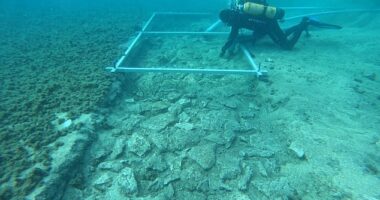A GIANT ice comet will soon approach our inner solar system – here’s how you can see it.
On the evening of July 14, astronomy lovers may get to see one of the largest known ‘cosmic snowballs’.
Dubbed C/2017 K2, the comet will be zooming into our inner solar system at a speed of around 615 km/sec.
However, even at its nearest point to Earth, it will still be far away enough that you will likely need a telescope to see it.
What is a comet?
Comets are “cosmic snowballs of frozen gases, rock and dust”, according to Nasa.


They’re made of leftovers from the formation of the solar system.
When a comet approaches the Sun, it forms a “tail” made of gas and dust particles that face away from the large star.
Comet C/2017 K2
C/2017 K2 was discovered in May 2017 at a distance beyond the orbit of Saturn – when it was around 2.4 billion km from the Sun.
Most read in Tech
Nasa revealed that K2 has been travelling for millions of years from its home in the Oort Cloud, a region at the edge of our solar system.
The Oort Cloud contains hundreds of billions of comets, however, K2 is one of the largest we’ve ever observed.
In fact, K2’s tail, or coma is between 81,000 and 500,000 miles wide – that’s the size of between one to six Jupiters.
Since July 2007, K2 has been in the constellation of Draco, around 309 light-years from Earth.
How to view the comet
Your best bet to see K2 in action is to watch online via public observatories, like the Virtual Telescope Project.
Nasa’s website might share the comet’s orbit as well.
If you are an amateur astronomer and own a small telescope, you might be able to view it on your own.
One thing is for sure: If you are interested in seeing K2, then 2022 is the only year you can do so.
That’s because the comet’s orbit is so long that it won’t come close to Earth again for a few million years.











